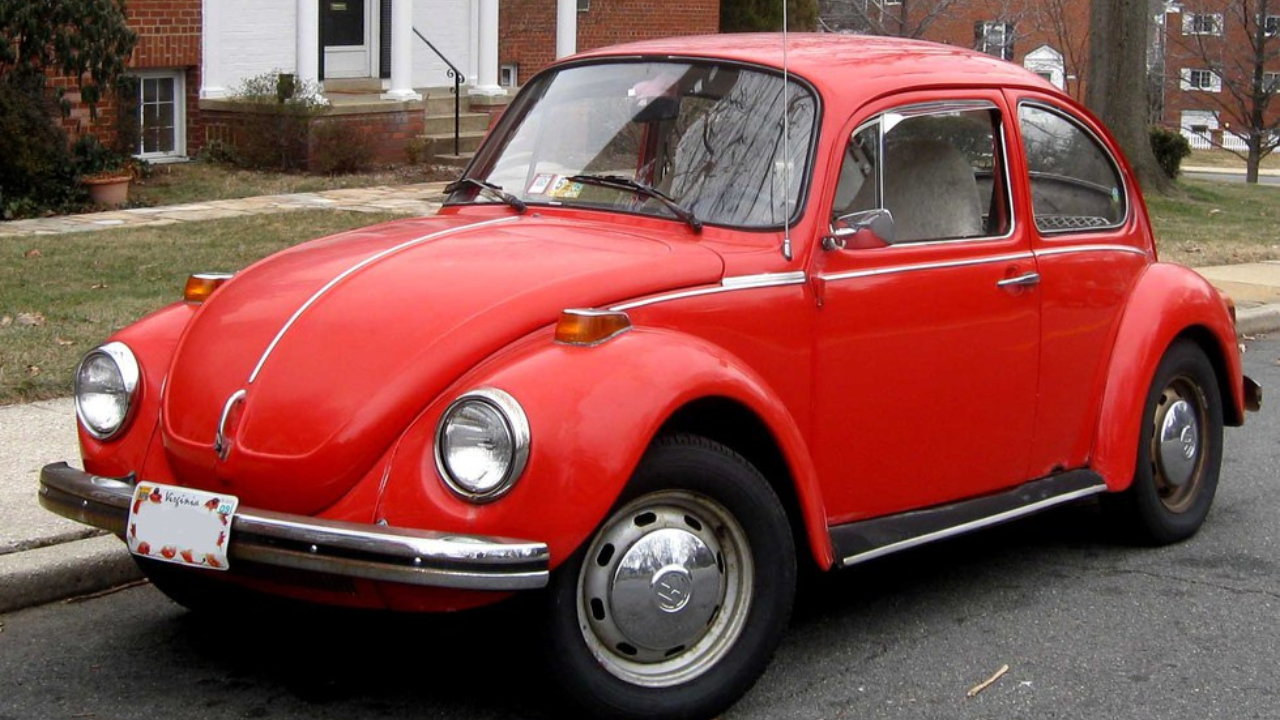Slug Bug Volkswagen Beetle, often called the “Bug,” is one of the most iconic vehicles in history. Its distinctive shape and rich history have made it a cultural phenomenon. But beyond its automotive legacy, the Beetle has also inspired a popular game called “Slug Bug.” This lighthearted pastime has entertained families and friends during road trips for decades, creating countless memories and sparking playful competition. In this article, we delve into the origins of the Volkswagen Beetle, explore the rise of the Slug Bug game, and examine how this cultural phenomenon has evolved.
The History of the Volkswagen Beetle
Origins of the Iconic Beetle Design
The Volkswagen Beetle was conceived in the 1930s under the direction of Adolf Hitler, who envisioned a “people’s car” (“Volkswagen” in German) that was affordable, reliable, and accessible to the average citizen. Renowned automotive engineer Ferdinand Porsche was tasked with designing this car. The result was a small, rounded vehicle that was aerodynamic and simple in construction.
Production of the Beetle began in 1938, but World War II delayed mass production. After the war, the British resurrected the Beetle and eventually became a symbol of Germany’s post-war recovery. By the 1950s and 1960s, the Beetle had achieved global popularity, particularly in the United States, where its affordability and reliability made it a favorite among young drivers.
The Beetle as a Cultural Icon
The Beetle’s charm extended beyond its practicality. Its quirky design and adaptability made it a beloved symbol of counterculture movements in the 1960s and 1970s. It was featured in movies, including Disney’s “Herbie” series, and became associated with individuality and freedom. The Beetle’s distinctive shape made it instantly recognizable, which played a significant role in its association with the Slug Bug game.
The Birth of Slug Bug Culture
What Is Slug Bug?
Slug Bug, also known as “Punch Buggy” in some regions, is a car-spotting game that revolves around spotting Volkswagen Beetles on the road. The rules are simple: when someone spots a Beetle, they call out “Slug Bug!” (or “Punch Buggy!”) and lightly punch the person next to them. Variations of the game include calling out the color of the Beetle or assigning different point values based on the rarity of the car’s color.
How Did Slug Bug Begin?
The exact origins of Slug Bug are unclear, but the game likely emerged in the mid-20th century during the Beetle’s peak popularity. The Beetle’s unique design made it easy to spot among other cars, making it an ideal choice for a car-spotting game.
Some theories suggest that the game started among children during family road trips to pass the time. Its simplicity and playful nature allowed it to spread quickly, becoming a staple of car travel culture. Over time, regional variations and rules developed, adding to the game’s charm and longevity.
The Evolution of Slug Bug
Variations and Regional Differences
While the core concept of Slug Bug remains the same, variations have emerged over the years. Some players include additional car models, such as Mini Coopers or vintage vans, as part of the game. Others assign specific point values to different colors or Beetle models, adding a layer of strategy to the fun.
In some regions, the game is known as “Punch Buggy,” players shout “No Punch Backs” to prevent retaliatory hits. These slight differences highlight the game’s adaptability and widespread appeal.
The Decline and Resurgence of Slug Bug
As the Volkswagen Beetle’s production declined in the late 20th century, sightings of the car became less frequent, leading to a decline in the game’s popularity. However, the Beetle’s reintroduction in the late 1990s and early 2000s sparked renewed interest in Slug Bug. The redesigned Beetle retained its classic silhouette while incorporating modern features, ensuring its continued recognizability and appeal.
Today, Slug Bug remains a nostalgic game for many adults and a fun discovery for new generations of players. The rise of digital apps and social media has even led to online communities dedicated to the game, further cementing its place in pop culture.
Why Slug Bug Endures
Simplicity and Accessibility
One of the reasons Slug Bug has endured is its simplicity. The game requires no equipment, preparation, or cost—just a keen eye and a willingness to participate. It can be played spontaneously, making it perfect for road trips, long commutes, or any journey with friends or family.
Nostalgia and Tradition
For many, Slug Bug is more than just a game—it’s a cherished memory from childhood. Parents often introduce the game to their children, passing down the tradition and creating new memories. This sense of nostalgia ensures the game’s continued relevance and appeal.
The Enduring Appeal of the Beetle
The Volkswagen Beetle itself plays a significant role in the game’s longevity. Its unique design and cultural significance make it an object of fascination, even for those who have never owned or driven one. The Beetle’s ability to evoke emotion and spark joy aligns perfectly with the playful nature of Slug Bug.
Fun Facts About the Volkswagen Beetle and Slug Bug
- The Volkswagen Beetle is the longest-running and most-manufactured car of a single platform, with over 21 million units produced.
- The Beetle’s design was inspired by streamlined, aerodynamic vehicles of the 1930s, including the Tatra V570.
- In 1999, the Beetle was named one of the five most influential cars of the 20th century.
- The term “Slug Bug” likely originates from the Beetle’s nickname, “Bug.”
- Variations of the Slug Bug game exist in different countries, each with unique rules and customs.
FAQs About Slug Bug and the Volkswagen Beetle
1. Why is it called Slug Bug?
The name “Slug Bug” comes from the playful act of “slugging” (lightly punching) someone when spotting a Volkswagen Beetle, which is often nicknamed a “Bug.”
2. Is Slug Bug the same as Punch Buggy?
Yes, Slug Bug and Punch Buggy are the same game, though the name and some rules may vary depending on the region or personal preference.
3. Can Slug Bug be played with cars other than the Volkswagen Beetle?
While the game traditionally focuses on Beetles, some variations include other unique or vintage car models, such as Mini Coopers or classic vans.
4. Are there rules to prevent excessive punching in Slug Bug?
Many players adopt rules like “No Punch Backs” to limit retaliatory punches and keep the game fun and safe for everyone.
5. Is the Volkswagen Beetle still in production?
Although Beetle production ended in 2019, its legacy lives on through its cultural significance and games like Slug Bug.
You May Also Read: https://ventsweekly.news/icryptox/



